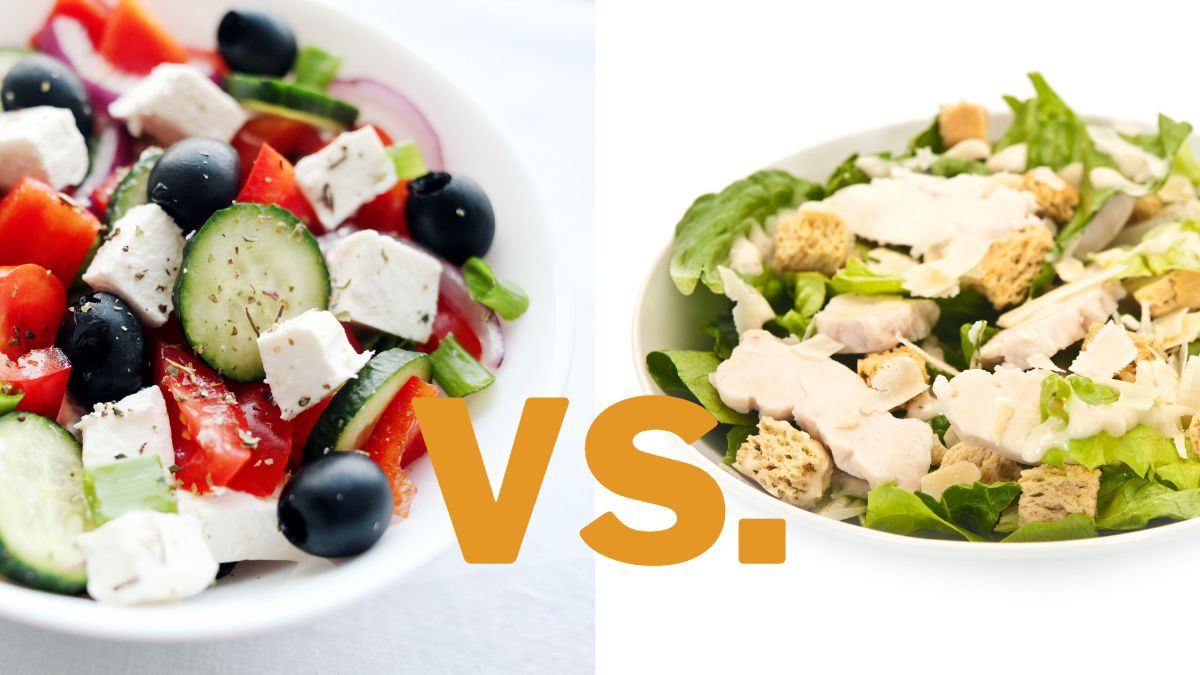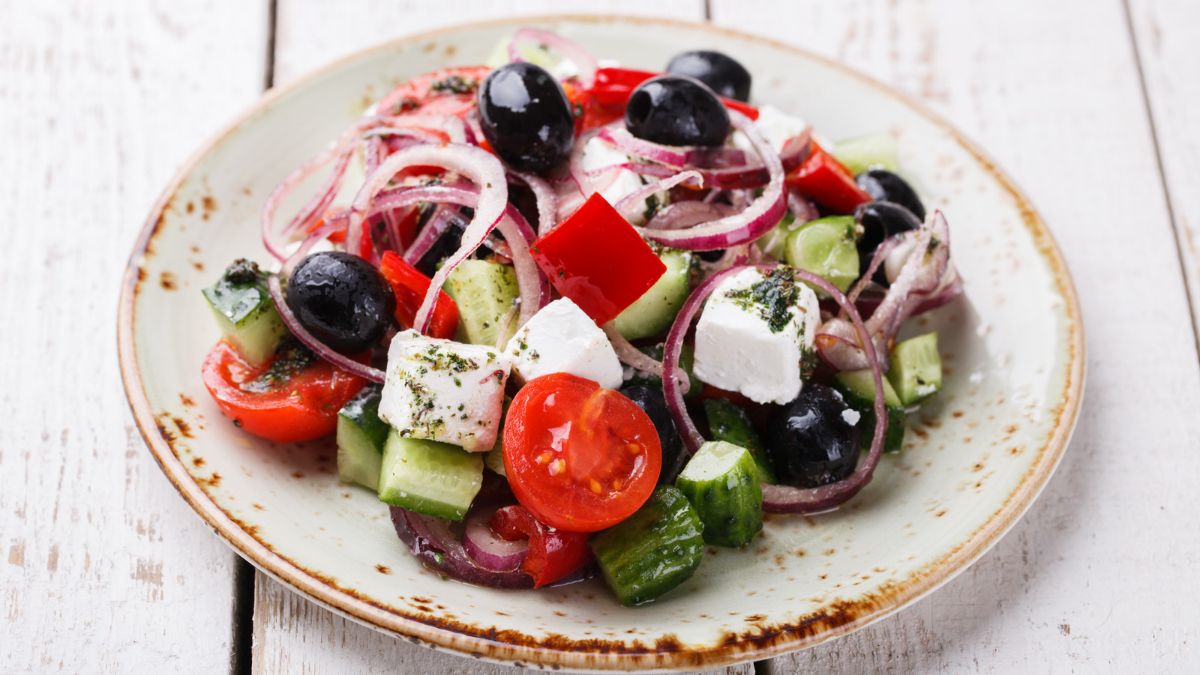Greek Salad vs. Caesar Salad: Differences & Which Is Better

Delicious, refreshing, and wonderfully versatile, Greek and Caesar salads are always a welcomed addition to many meals. I often have them as a meal for themselves for lunch or whenever I want a light dinner. Even though some of the ingredients are the same, you could never confuse one for the other if you know where to look. So, what are the differences between Greek and Caesar salad, and which is better?
Greek salad contains lettuce, tomatoes, cucumbers, olives, and feta. Caesar salad is made of lettuce, croutons, eggs, Worcestershire sauce, anchovies, Dijon mustard, and parmesan cheese. It often contains grilled chicken breast pieces, which is a variation of the Caesar salad.
To help you decide more easily which one to have, in the following paragraphs, I will explain the differences between Greek and Caesar salads. So, let’s get started!
Comparing Greek Salad and Caesar Salad
Greek and Caesar salads are both delicious and contain similar ingredients; however, they are in no way the same thing. They taste different and have different sets of features that make them differ.
Similarities in Preparation and Key Differences in Ingredients
Greek salad is a summer salad. It is made with lettuce, cucumbers, tomatoes, olives, and feta cheese. It is discretely seasoned with salt, pepper, and olive oil. It may sometimes contain croutons for extra body, but it isn’t traditionally made that way.
Caesar salad is made with lettuce, croutons, eggs, Worcestershire sauce, anchovies, Dijon mustard, garlic, and parmesan cheese. The most popular Caesar salad variation contains slices of grilled chicken breast. Moreover, this variation is so prevalent that many consider it the original recipe.
Caesar salad also needs dressing, where the Worcestershire sauce, Dijon mustard, and anchovies come in. Many also add mayonnaise to this combination, which is why Caesar salad dressing is predominantly white.

The making of both these salads is the same, including the same steps — rinsing the ingredients, chopping them, mixing everything in a bowl, and adding seasoning to the Greek salad and dressing to the Caesar salad.
Slightly Tangy Greek Salad and the Zesty Taste of Caesar Salad
Greek salad is very refreshing and delicious. It is crunchy since the vegetables are used fresh and slightly tangy due to the fetta, olive, and tomato combination. Greek salad is naturally salty because of the fetta and olives, accentuating the tomato and cucumber flavors.
Overall, it is very rich and, at the same time, simple. It is a rustic experience, ideal as a snack or a side dish.
Caesar salad is richer than Greek salad as it is fattier and more caloric. No matter your variation, it will have dressing at the very least, even if it is meat and egg-free, which is not very possible to begin with.
It tastes zesty and tangy from the Dijon mustard combined with the parmesan cheese. The Worcestershire sauce gives it a certain sweetness, while the lettuce contributes to freshness and crunchiness.
The eggs give Caesar salad a certain creaminess and a distinct eggy flavor, while the grilled chicken breast turns the salad into a meal in itself.
Nutrition of Greek Salad vs. Caesar Salad
Greek salad is very healthy, low fat, no carbs, and low-calorie. It is abundant in fiber since the ingredients are mostly fresh vegetables. It is also nutrient-dense, with a good amount of vitamins A and C and iron and potassium. [1]
Greek salad also has a modest amount of protein from the feta cheese and antioxidants.
Caesar salad is considerably fattier and more caloric than Greek salad. Nevertheless, it has dietary fiber, protein, a decent amount of Vitamin C, modest quantities of iron and magnesium, and a noticeable amount of calcium. [2]
Both salads are considered healthy and can fit well into a healthy diet.
Serving: Greek Salad as a Side and Caesar Salad as a Meal
While Greek salad is often served as a side dish or an entrée, Caesar salad is often a meal in itself. If served as an entrée, Greek salad is often paired with Ouzo, traditional Greek alcohol, but you can pair it with a drink of choice, as it has various flavors.

It pairs well with meaty meals consisting of pork, beef, or chicken if served as a side dish. It goes great with rice, potatoes, beans, peas, grilled vegetables, mushrooms, or soups.
Caesar salad is more often paired with drinks than food. I like it best with wine and beer, but if you want to, you can pair it with other drinks and see how it fits. It is often served with bruschetta or grilled cheese on the side.
You can also pair Caesar salad with another dish, though you don’t have to, as it is very satiating.
Which Is Better, Greek Salad or Caesar Salad?
If you pair the salad with a heavier meal, go for a Greek salad. If you only have salad as a meal, then choose Caesar salad. Greek salad is fresher and lighter, and Caesar salad is creamier and fattier.
Both Greek salad and Caesar salad are delicious and very popular. To say that one is better is untrue and an insult to the other one. It would be best if you based your decision on the occasion and sides you will have, not on which is better.
This is why I like to have Greek for dinner and Caesar for lunch. Which one do you prefer and for which meal? Excited to hear from you in the comments below!
